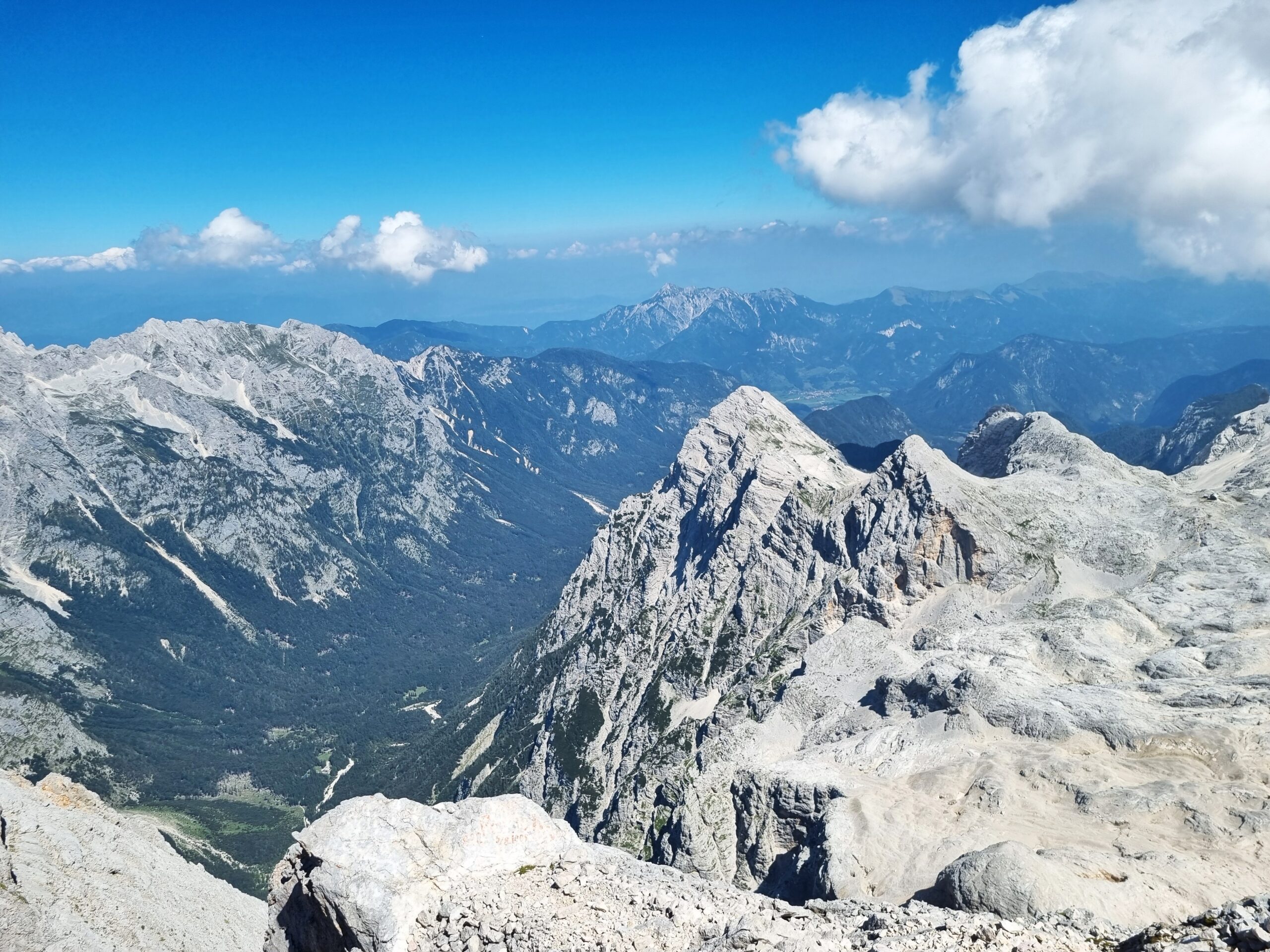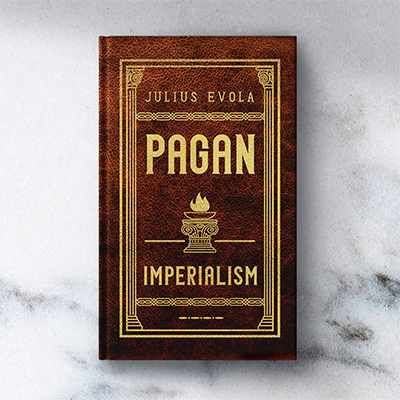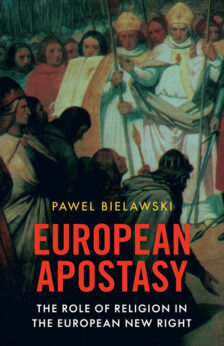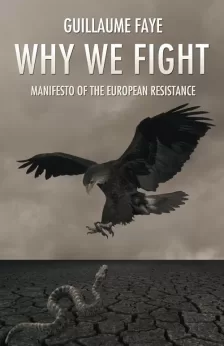High above the plains of ordinary life, the old father stands guard over the land and her people below. He stood there, nameless, when the ancestors of the nation in whose coat of arms he is depicted first settled at his roots. He stood there, already old, when the surrounding land was still young and wild. He watched silently as countless generations walked the path from the cradle to the grave. He witnessed the tribulations and the storms of history. He greeted the first brave mountaineers who dared to climb on his summit more than 240 years ago, and today he is visited by crowds of hikers, climbers and “tourists” every year. There is even a local saying that you are not truly a Slovene unless you have conquered Triglav. For that is the name of the highest peak of the Julian Alps, which rises 2,863 meters in the sky and is embedded in the history and culture of the country beneath it.
Not so much to express loyalty to my country, but rather because it is only proper to climb the tallest mountain of one’s homeland — if one considers oneself at least a moderate hiker — I decided to ascend the old father Triglav on a warm sunny day in August. It is quite fitting, is it not, to visit the lord of the mountain range named after the famous Julius Caesar in the month that carries the name of his almost equally renowned successor. We visited the old father, as he is called among the people of Slovenia, on a Saturday during the height of the summer hiking season. Therefore, the adventure could not offer a tranquil and contemplative experience that invites so many of us into the bosom of the mountain wilderness. Instead, we were constantly greeted by other groups or individual hikers who were also answering the conscious or unconscious urge to free themselves from concrete, heat, smoke and the usual dullness of urban civilisation. It is a somewhat sad irony that with the expansion of outdoor sports, which for many represent a temporary escape from the noise and the crowds, those things have found their way into the once-wild world of mountains, forests, and lakes. In his essay “The Mountain, Sport, and Contemplation,” included in the book Meditations on the Peaks, Julius Evola wrote: “Another danger — caused by other factors — is the ‘mass’ phenomenon that invades the mountains, which unavoidably brings a plebeian quality and caused the loss of spiritual quality, the level and the value of the experience.” I can only imagine his horror in looking at the long line of people amid the precipices on a narrow climbing path beneath the peak, moving slowly and at times standing still like a queue in the supermarket that we witnessed on our hike. But judging from his climbing experiences, described in the above-mentioned work, he would have almost certainly chosen one of the more difficult Alpine climbing routes, and possibly a different season, and wouldn’t have to face the hordes of visitors, at least not until reaching the summit. Nevertheless, we shouldn’t be too critical towards the described crowd of hikers. Firstly, due to the fact that we were also a part of that multitude, and secondly because, at least in Slovenia (I cannot speak for other countries as I haven’t visited many mountains abroad yet), hikers and mountaineers are quite conscious of their surroundings and act accordingly. They mostly follow the unwritten general rules of conduct, which include being polite and keeping the environment clean.
Hiking Community and Outdoor Culture
It seems that every time we visit the mountains, we become a part of a spontaneous hiking and mountaineering community. A certain solidarity, which quickly fades into the background when one finds oneself in the city, exists in the world of the great outdoors. While the sense of community is being eroded in the modern concrete fortresses of big shopping malls and ugly residential buildings, especially when multiculturalism is added to them, a semiconscious sense of community may return to us the moment we step into the realm of forests and mountains. Saying hello and exchanging a few words with strangers with whom we share a small link in the form of our affection towards the natural world may remind us of simpler and more homogenous times when people of a local or national community were more trusting and benevolent towards each other. They were aware that they share bonds of ethnocultural heritage. Such hiking reflections may even evoke a strange nostalgia for an era that ended before ours began, when people were more enrooted in their land, and more connected through the general values of their society. As has already been mentioned, there are certain common rules among hikers. That reminds us of a time when the common notion of culture prevailed among our ancestors. In “hiking culture” those rules are just simple things, such as not littering, being respectful and relatively quiet. If someone throws trash around or disturbs the peace of nature, he or she will most likely be met with disapproving glances and even reproaching comments. The presence of communal feeling gives us some reassurance as well, since different unforeseen situations may occur in the mountains. Individual hikers or groups will not only greet each other and exchange words of politeness and encouragement but will also, if necessary, lend a hand to each other. General mutual respect and solidarity create a better sense of community. Intertwined with the national symbols, heritage and history of the Alpine countries, the mountain is not only a unifying symbol among those who try to conquer it. While in Slovenia we see the mountain in our state symbols, it is also widely present as a recognizable symbol in other nations that live beneath it. We meet it in the folk stories and songs, in legends, proverbs and collective national consciousness. The mountain thus represents a strong symbol of unity and identity for all of the Alpine nations.
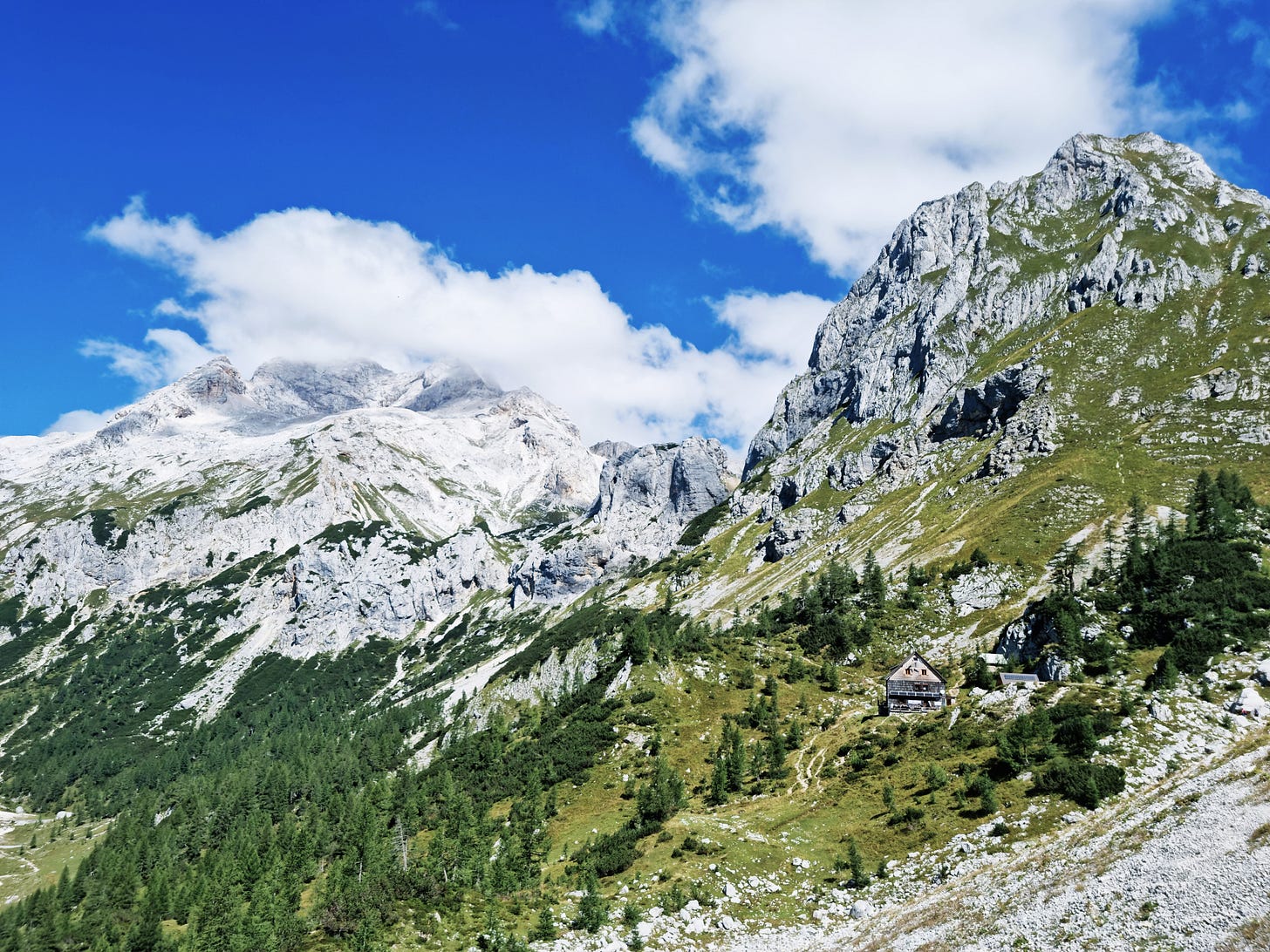
King of the Julian Alps, Symbol of the Nation
A mountain such as Triglav, which is a symbol of the nation, land and nature, of blood and soil if you will, can also be envisioned as a metaphor for a great king that once ruled the land, and serves today as a force of harmony and unity. Once people believed that mountains were the seats and dwellings of divine and mysterious beings. Likewise, kings derived their authority from the divine right to rule, and some kings of old would claim ancient lineages from gods or semi-divine heroes. Kings once ruled over their kingdoms, and in countries that did not cast aside their royal families, such as modern constitutional monarchies, they remained a unifying figure for the people, although they lost most of their ruling powers. In a similar way, the mountain may represent the monarch of nature as it best symbolises the natural realm, both beautiful and dangerous. In the past, nature had a much bigger impact on the lives of ordinary people, just like their kings or queens did. People were at her mercy. Crops could be destroyed by drought. Men, women, children and their livestock would die from hunger and diseases. Floods, earthquakes and avalanches caused sudden and unimaginable catastrophes. In the days of ages past, snow, storms, rain, cold and heat were the causes of many troubles and even calamities for our ancestors. Today nature still holds great power over us. Drought still hurts agriculture, and to this day we witness people losing their homes and even their lives in wrathful floods and earthquakes. But with the rise of technology, we ceased to be dependent on nature’s whims in many regards, and the consequences of natural disasters are far easier to deal with than in the past. On the other hand, the natural world, amid which we built our civilisation, has remained deeply present in our culture. Wildlife, animals, trees, plants, as well as rivers, lakes, hills, and of course mountain ranges, which are characteristic of a given territory, are always present in the traditions of the people that call that area their home, their land, and their country. The natural landscape is reflected in the cultural landscape. In constitutional monarchies, a king or queen can be a strong unifying figure that may even transcend party politics and other divisions within a nation. The mountain can serve a similar purpose. Once the mountain was the great and grim king of the natural world. But while that shouldn’t deceive us that her eternal laws don’t apply anymore, with the arrival of the modern world, nature has lost some of its power over man. Above all, just like a wise and uncorrupted king, the mountain may be seen in the eyes of a nation that once lived in its shadow and now seeks comfort in its arms, and adventure among its rocks, as a unifying symbol that stretches beyond modern party politics and divisions. Like elsewhere, in Slovenia the mountains are visited by different people. Most of them see “three-headed” Triglav as the symbol of their country. The Alps in general are seen as a part of the rich natural heritage of this small but resilient land. In the consciousness of the people, Triglav is one of the symbols of their national identity. Not the chief symbol, but an old and important one.
When people go to the mountains they are united by them, they become compatriots, enjoying the natural beauties of their land. A good king may unite many of his people despite current political turmoils, reminding them that they are still one people. Triglav is thus a mighty and ancient king who is a national symbol, not so much because it can be seen in the coat of arms of the Republic of Slovenia, but because it goes beyond mere modern state symbols and is embedded in the national consciousness. It is also a part of folklore. It should be pointed out that while people of different views wander in the mountains, and there are quite a few visitors from other European countries, one will rarely come upon a racial foreigner among the peaks, especially on more demanding trails. I presume that this is also true for other European countries, even those who are faced with higher levels of multiculturalism. Regardless of their diverse and at times irreconcilable opinions, people of a given ethnicity or race can still share similar longings and will feel at home in the great outdoors of their land. Europeans are the sons and daughters of their ancestors and their land, and they long for her beauty.
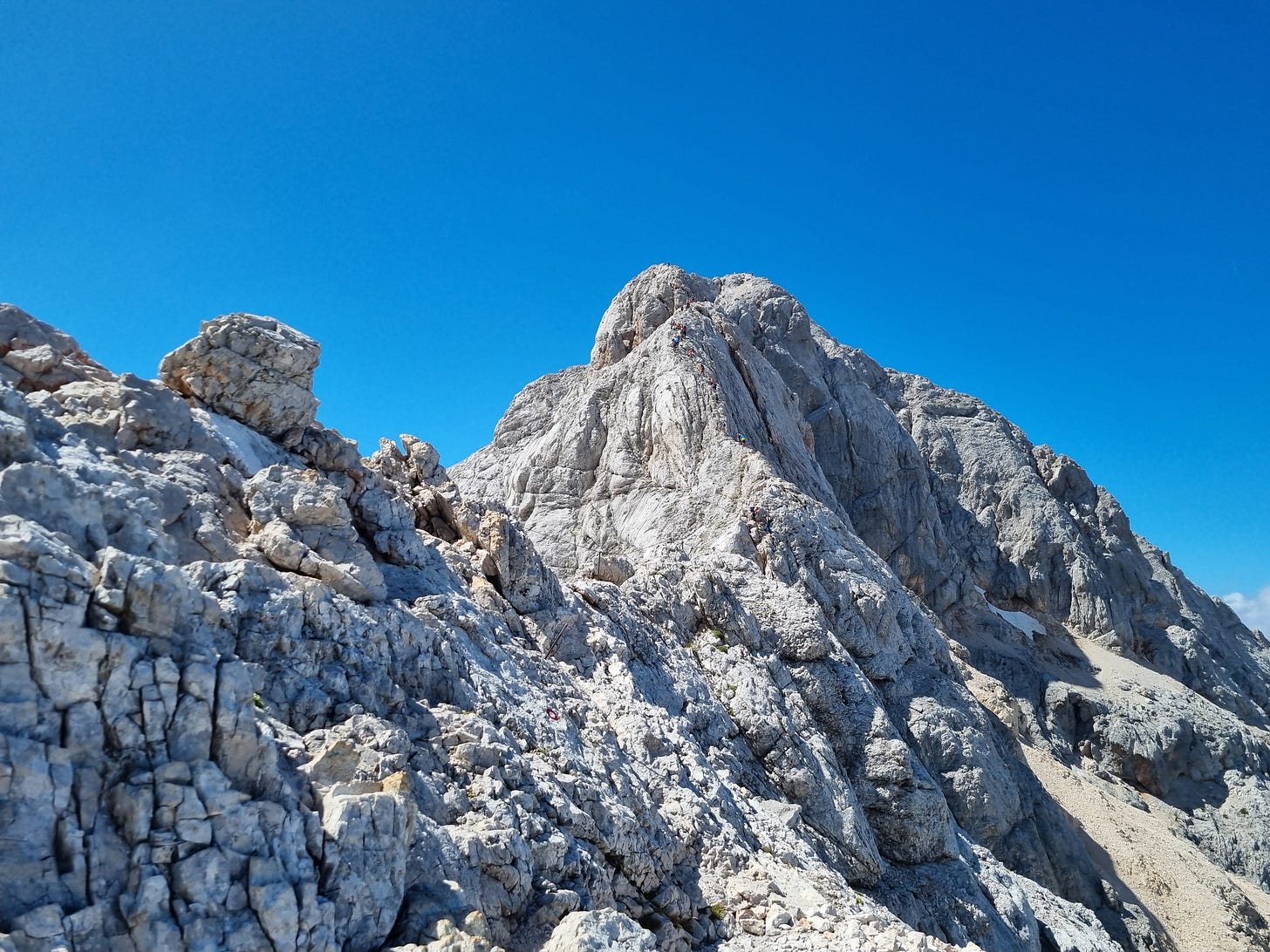
In the Embrace of the Mountains
The Lord of the Julian Alps is embedded within Slovenian history, culture, and national consciousness. Since four brave local mountaineers ascended its summit in 1778, before the well-secured routes and modern equipment enabled swarms of hikers to visit it every year, and possibly even before that, it has entered into the tale of the nation that dwells below. We have lived in the embrace of the Alps for hundreds if not more than a thousand years. Ascending the mountain is a broad metaphor for will and endurance, for the triumph of one’s own existence over weariness, fear and all the worries that arise in one’s mind while climbing towards the sky. As a metaphor for hardness and endurance, the mountain is a fitting analogy for a small nation that faced and weathered many hurricanes of history and managed to survive and preserve its ethnocultural characteristics within greater states and empires. Such analogies are naturally not unique to Slovenia. Different European nations have different historical backgrounds that are sometimes linked with each other, sometimes similar and sometimes, albeit rarely, completely unique. But Europeans are connected by common threats of identity and different nations have weathered sometimes the same and sometimes different storms. What was said about a small Slovenian nation may also ring true for many other European nations, large or small. The Alps, the Carpathians, the Dolomites, the Pyrenees and other mountain ranges are a part of our home and have found as such the way into our cultures and traditions. They are the silent masters and guardians. If we decide to conquer them, they will force us to overcome our fears and push us towards our limits. But, at the same time, they offer us a sanctuary, a chance to get a fresh breath of air and to clear our minds.
Long Live the King
In conclusion, let us return to our summer hike on the roof of Slovenia. Triglav is far from immune to the age of consumerism and social networks. It is a host to frequent crowds of visitors that may seem from a distance like ants swarming on its slopes. Many of them decide on a two-day trip. But we were early enough to complete the ascent and descent in one day, as planned. We started and finished our journey in the twilight. The last stage of the journey is the true test, at least for a moderate hiker, as the route becomes technically more difficult and dangerous, especially if one is not too comfortable among the precipices and in high places. In the presence of the mountain, the great mass of rocks, which may as well be eternal and indestructible, compared with our fleeting time on this earth, we can truly become aware of the shortness of our life span. While that may sound depressing, it may also motivate us to live the best life possible, to leave a legacy behind and to ensure the continuation of our bloodline, which, just like the mountain, can become almost eternal. Our forefathers looked upon the same mountains and some of them took the same hiking paths that we now take. One day, when we are long gone, our descendants may stand in the same high places and feel the same flow of life and wonder that we feel when we look towards the great horizon and the world beneath us. We always return to the mountain. It is in our blood. Now the summer is gone and the winter is passing. Another year is behind us. But through the fog of the city, through the mist of the mundane existence, the great mountain peaks can be seen, covered with snow and glittering in the winter sun. Among them, the great old father, their king, towering high into the sky can be seen from all corners of the land. His rule began in the aeons long lost and forgotten and will continue until the world itself breaks and falls into oblivion.
